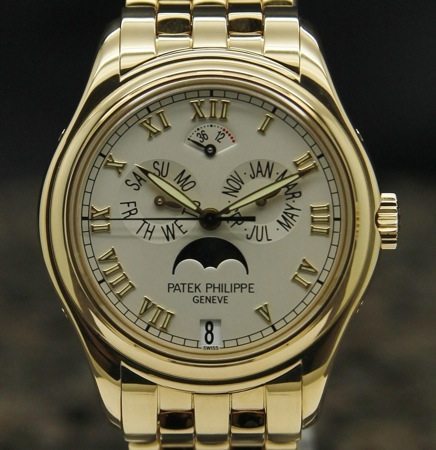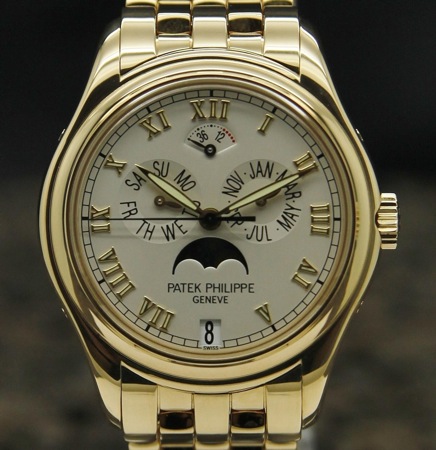I know, I know – All of you watch enthusiasts already know the answer to this question. However, many of the watch enthusiasts that are new to our world may not be quite so familiar with the difference between a watch with an annual calendar and one with a perpetual calendar. No fear. This blog will answer that question and will equip you for the next time this topic comes up in conversation!
First, let’s begin with the similarities between the two functions. Both the annual and perpetual calendar watches display the hour, day, date, month, and moonphase. Both functions are based on the Gregorian calendar, whose dates vary year to year.
Let’s start with the most important and obvious difference between an annual calendar and perpetual calendar. A watch with an annual calendar must be manually set once a year, while the perpetual calendar does not. The annual calendar is automatically adjusted following every month with 30 or 31 days. However, it must be manually set every 1st day of March because the annual calendar does not recognize that February only 28 days, or 29 days for leap years. As a result, the annual calendar must be manually set once a year, while the perpetual calendar does not have to be reset. With a combination of difference levers and movements, the perpetual calendar will automatically change to the correct date, including from February 28th or 29th to March 1st.
Perpetual calendars do not need to be adjusted until 2100. The reason it must be adjusted in this year is because, usually, years that are divisible by 4 are leap years. However, years that end in 00 must be divisible by 400 to be a leap year. The perpetual calendar does not take this last part into account, so the watch must be adjusted at year 2100. IWC has just recently developed a perpetual watch movement that will not have to be updated until 2499. However, if you ever are setting the date on your perpetual calendar, make sure you do it correctly. If you accidentally set it on the wrong date, you have to wait until the batter runs out before you can fix it.
Since the 1920s, watch companies have been creating watches with perpetual calendars, Patek Philippe being the first. In 1985, IWC created the most advanced perpetual calendar with its release of the IWC Da Vinci. Patek Philippe patented the first annual wristwatch in 1996.
Obviously, a watch with a perpetual calendar is much more complicated than a watch with an annual calendar. As a result, perpetual calendars are significantly more expensive than an annual calendar.
Get More Articles Like This in Your Inbox
We're constantly creating great content like this. So, why not get it delivered directly to your inbox? By subscribing you agree to our Privacy Policy but you can unsubscribe at any time.








